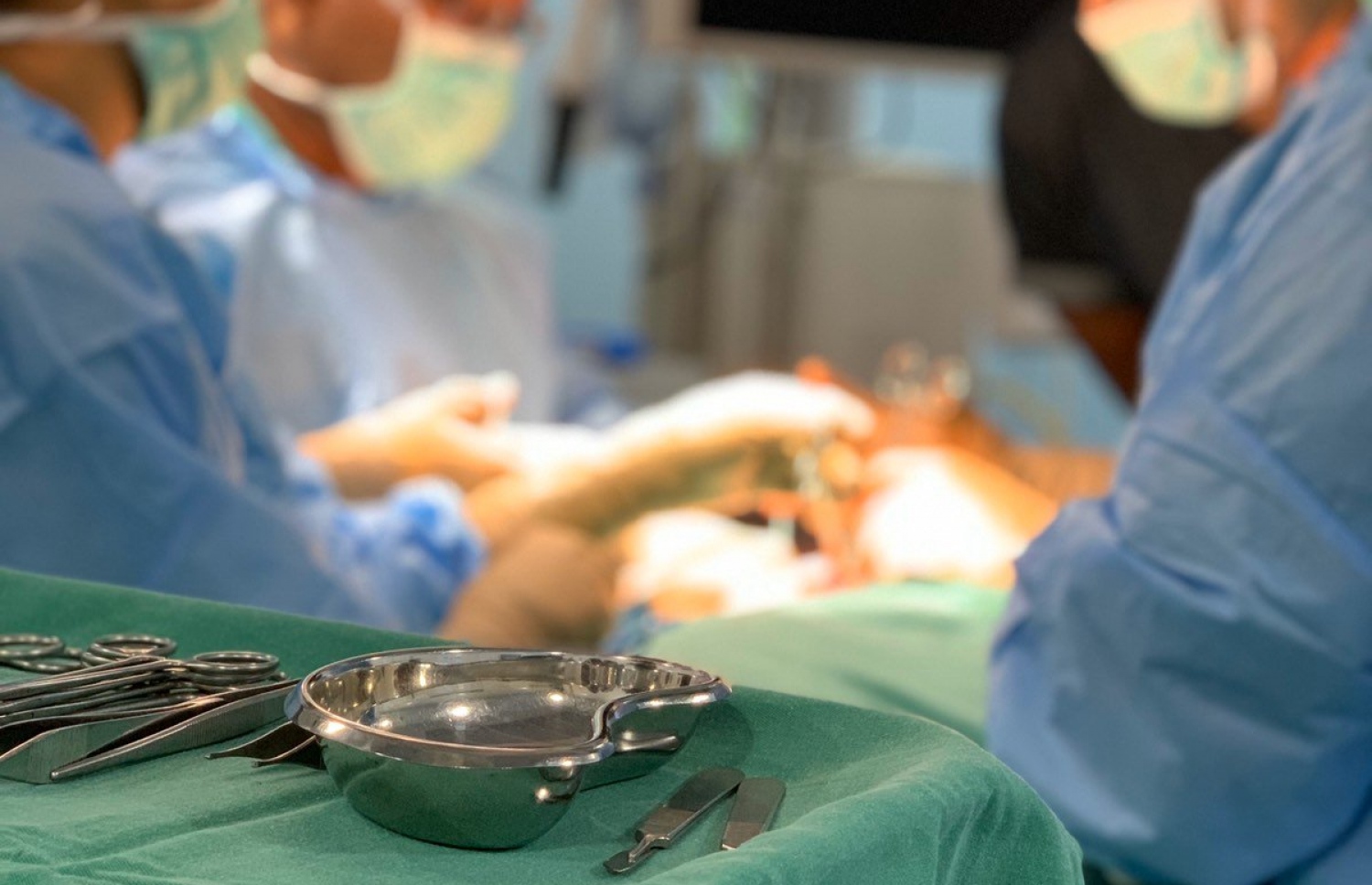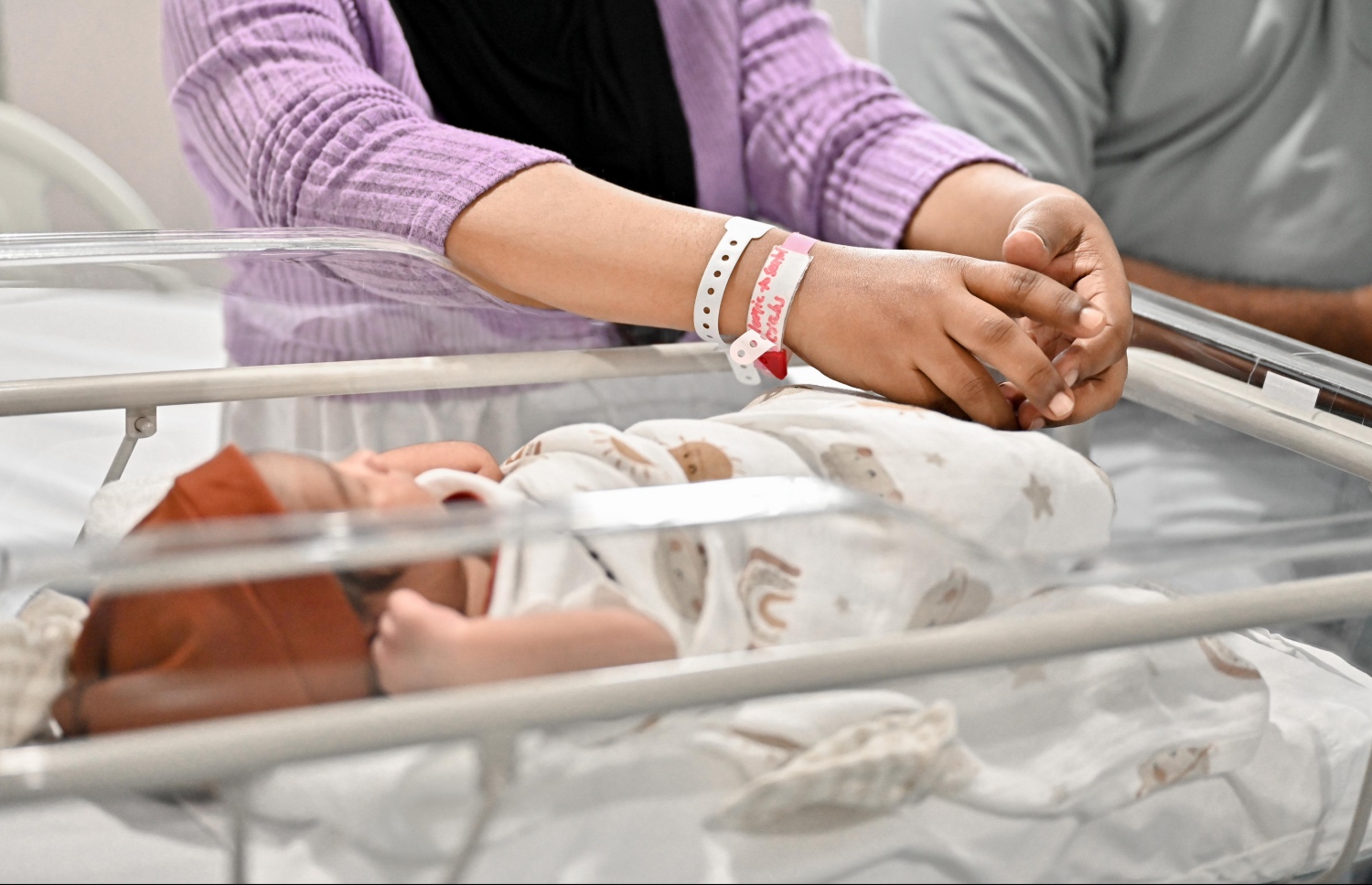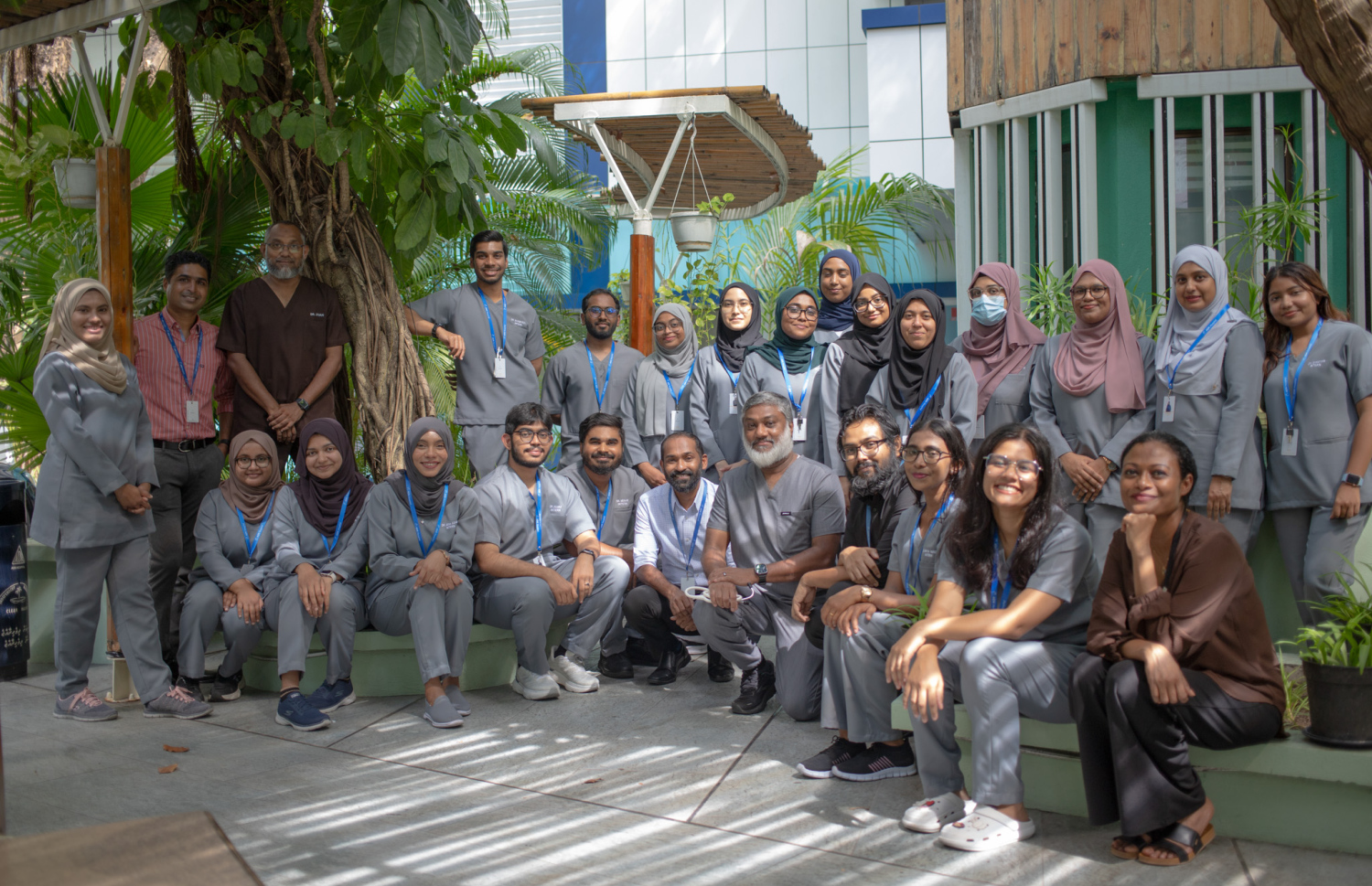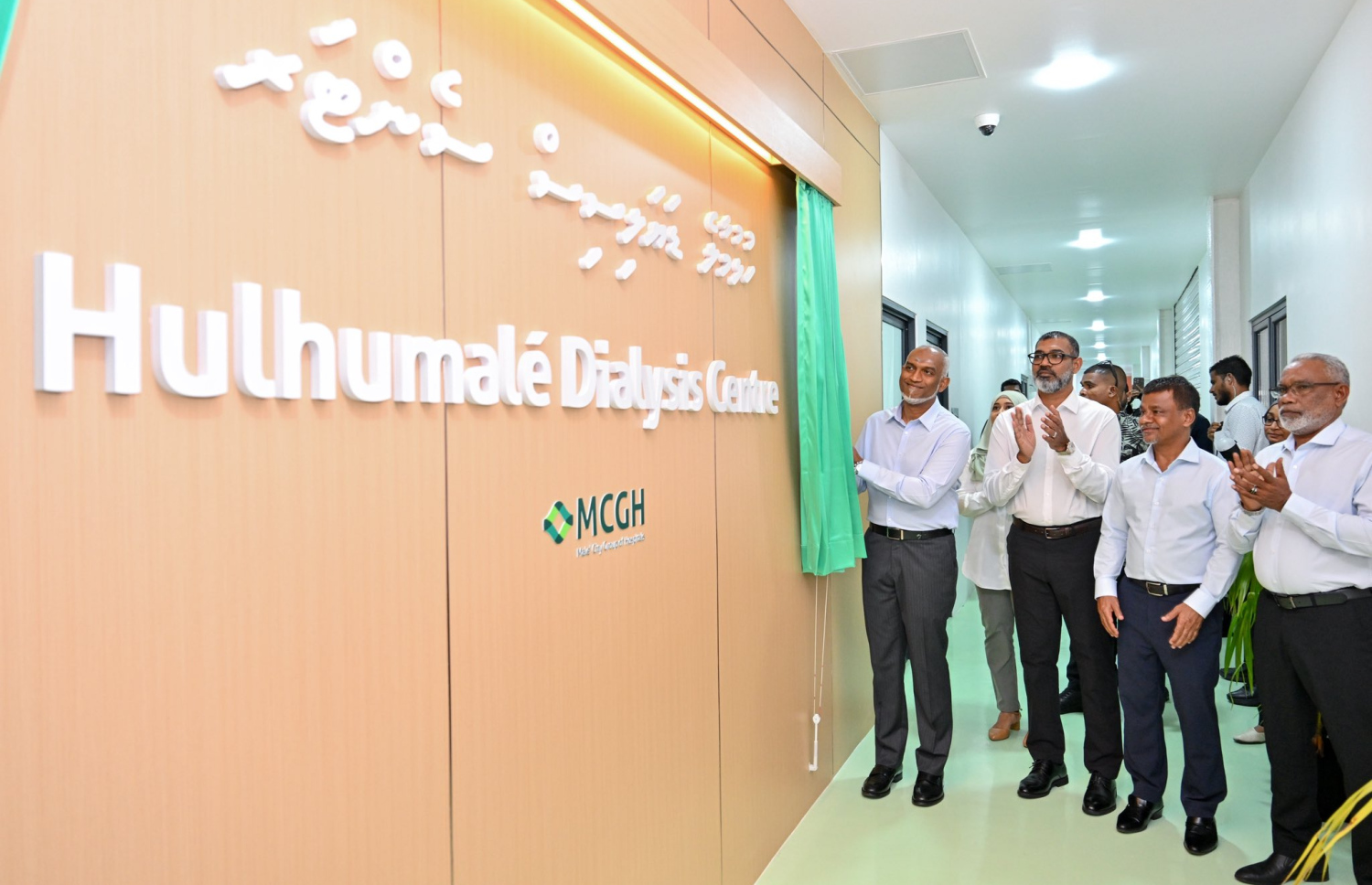A nation’s healthcare system is its backbone. When people are healthy, they can work better, care for their families more thoroughly, and contribute to their communities properly. Each individual has a unique role to play in their community, which contributes to national development. A fisherman’s ability to bring home his catch, a teacher’s energy to guide her students, or a mother’s patience to raise her child; all these everyday roles reflect the health of a society. The wellness of the society stems from how the nation's healthcare system is structured and managed. In simpler terms, a county’s healthcare system dictates how healthy its citizens are, thus ensuring how healthy the country is.
The evaluation of the healthcare system
The healthcare system in the Maldives has undergone significant changes. People have used Dhivehi beys, a traditional medical system based on herbal treatments, regional customs, and spiritual healing, for generations. The official adoption of modern medicine in the early to mid-20th century represented a turning point, even if these traditions still have cultural importance today.

The initial attempts to construct modern medical facilities in the Maldives, especially in Malé, took place during the British colonial era. The Central Hospital, now known as the Indira Gandhi Memorial Hospital (IGMH), was opened during Mohamed Amin Didi's administration in 1952, marking the most significant turning point for the Maldives’ healthcare system. Locals were able to get proper healthcare services at home for the first time. Following independence in 1965, the country gradually broadened healthcare access with the help of international partners who brought in trained doctors, nurses, and essential medicines.
Since then, the government has realized how critical it is to keep healthcare accessible and affordable to all. By the late 1970s, President Maumoon Abdul Gayoom's administration had implemented important reforms, including expanding immunization programs and offering basic healthcare services nationwide at a low cost. Every atoll had a health centre equipped with at least one doctor and other medical caregivers. These developments made it possible for people in remote atolls to obtain basic medical care without having to travel all the way to the capital city and saving on the financial burden every time they needed medical care.
The most significant step in the journey of the Maldives’ healthcare was the launch of the Maldives' national health insurance program, Aasandha, in 2012. For the first time, all Maldivians could receive free medical care via government hospitals and numerous private clinics at a discounted rate. It was a vital step ahead as it made clear that the country recognized healthcare should be accessible to all, making it a right, not a privilege.
Over the years, the Maldives has slowly started to strengthen its ability to provide specialized medical care. A major milestone came in 2005, when IGMH opened its first Cancer Unit, making chemotherapy available locally for the very first time. Until then, cancer patients had no option but to travel abroad, usually to India or Sri Lanka, even for the most basic treatment. While the country still lacks radiotherapy facilities, progress has been made. Today, patients can access oncology consultations, diagnostic services, and palliative care within the country, supported by visiting specialists and national cancer control programs.

Fertility treatments were introduced to the Maldives recently. For years, couples struggling with infertility had to make difficult journeys abroad, often to India or Sri Lanka, for treatments like in-vitro fertilization (IVF). It all changed in 2016, when ADK Hospital became the first in the country to offer IVF services, placing the Maldives among the few small island nations with local access to such care. The progress continued in 2023, when the nation’s first dedicated Fertility Centre at Tree Top Hospital was opened. Just a year later, in 2024, the centre proudly celebrated the birth of its first IVF babies, a milestone that gave new hope to families who once thought parenthood was beyond their reach. With advanced options such as IVF, IUI, and ICSI, the centre quickly became a symbol of possibility and reassurance for many Maldivians. This milestone not only made it accessible, but it also saved a huge financial load off of the patients seeking the service.

The driving force of the healthcare system and its challenges
Behind every milestone in the Maldivian healthcare system stand the doctors, nurses, and medical staff who make it possible. Their work is not easy. Their working hours are long, and demand is high. Doctors often endure long shifts, sometimes over 8 hours a day, with little to no time left for family or social life. On remote islands, where a single doctor may be responsible for an entire community, they are effectively on call 24/7. This often leads to burnout, under-motivated medical professionals, resulting in high turnover. The weight of their responsibility is quite heavy. Unlike other professions, a doctor’s mistakes can have life-or-death consequences, making it one of the high-pressure jobs out there.
For doctors to truly do their jobs well, they need more than just knowledge and skill. They need the right tools around them. A properly equipped hospital, enough staff to share the workload, and a steady supply of medicines are just as important as the doctors themselves. But this is an area where the Maldives struggles to this day. Now every inhabited island has a hospital or a health centre, along with atoll hospitals built across the country, yet some of them fall short on staff or modern equipment, leaving doctors unable to give patients the full level of care they need.
The Maldives’ unique geography adds another layer of complexity to the equation. Spread across more than a thousand islands, delivering equal healthcare coverage is a pressing challenge. Atolls with significantly smaller populations often have limited facilities, leaving residents dependent on Malé or regional hospitals for even moderate to complex medical needs. It is an additional financial burden for those patients who have chronic diseases and require timely health check-ups.

Statistics display a clear scale of the problem. The Maldives healthcare system consists of about 1,200 doctors, supported by 3,000 nurses and 600 allied health professionals. While these numbers may seem adequate for the country’s population, among these, only about 433 doctors are specialists, and most are based in the Malé area. This leaves large gaps in access to specialized care. For instance, while chemotherapy is available at IGMH, patients needing radiotherapy must still bear the financial burden of seeking the very essential care that they need. Similarly, fertility services, though now available locally, are solely confined to the capital, meaning families from atolls must make repeated, costly trips for treatment.
Making sure physicians and other medical professionals stay up to date with the rapidly evolving field of medicine presents another difficulty. Staying current necessitates ongoing training because new procedures, technologies, and treatments are always being developed. International partners like the WHO and UNICEF frequently support training programs, and physicians in the Maldives have access to Continuing Medical Education (CME) sessions and workshops at locations like IGMH and regional hospitals.
However, the majority of doctors still have to travel overseas for postgraduate study in advanced specialization, whether it be to Malaysia, Sri Lanka, India, or even farther. Although these opportunities are beneficial, they come with a price: time away from family, financial stress, and in certain cases, doctors who decide not to return after completing their training. Although it is encouraging that the Maldives National University's Faculty of Medicine has begun to establish local postgraduate programs, much more effort must be made to really increase the number of specialists in the country.
All these challenges together have left the healthcare system under heavy strain. For patients living on remote islands, this often means long delays, expensive travel, and fewer treatment options close to home. In Malé, doctors struggle with overwhelming caseloads, while in the atolls, many are left to handle complex cases without the right tools or support. The toll is clear: doctors face burnout, and the gap in healthcare quality between the capital and the outer islands continues to grow wider.

Despite its flaws, the Maldives’ healthcare system has made remarkable progress. Since the early days of traditional medicine, to free healthcare for all citizens, and the introduction of specialized services that used to be out of reach for most, the achievements are worth recognizing. However, the future depends on addressing the gaps in the healthcare system: expanding specialist services beyond Malé, investing in advanced equipment, strengthening local training, and embracing telemedicine to bridge geographic challenges.
The current administration of the Maldives has prioritized healthcare, emphasizing service expansion and access improvement across the islands. To bring cutting-edge care closer to Maldivian families, the 2025 budget includes the construction of five new hospitals, including specialty centres for mental health and cancer, as well as the launch of IVF procedures under Aasandha. The government has signed contracts with state-owned companies like RDC, MTCC, and Fenaka to construct 19 new healthcare facilities in different atolls throughout the Maldives. On the supply side, a new partnership with India is expected to secure a steady flow of essential medicines, helping end the shortages that have long disrupted care.
Overall, the history of healthcare in the Maldives is one of resilience and progress, but also of ongoing challenges that demand thoughtful, well-planned, and sustained action. To build a healthier nation, the system must evolve in a way that makes quality care accessible to every Maldivian, no matter which island they call home.